How to Grow Bell Peppers & Harvest Them Big & Juicy
Author: Jen Worst | Editor: Omar Alonso
Review & Research: Jen Worst & Chris Miller
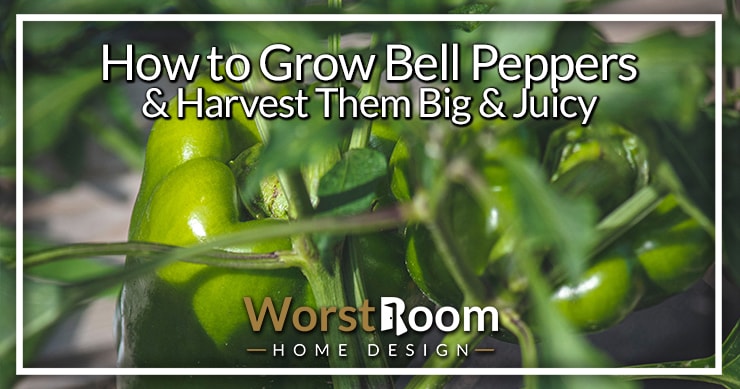
So you want to know how to grow bell peppers as big as your head and as plentiful as a farmer's bountiful harvest? You came to the right place.
Bell pepper (Capsicum annum) is one of those fruits that we all consider vegetables. Yes, you read that right... bell pepper is a fruit. Its colorful variety and big green leaves paint a beautiful picture in your garden, regardless.
There are several varieties of bell peppers, or as some all them, sweet peppers, but all have almost the same quantity and quality of nutrients and require the same effort and care in growing.
Bell peppers taste great in almost any dish. You can use them in raw form in salad dressings, pasta, and sandwiches, or cook them in different cuisines. Bell peppers can be used on pizza, soups, burgers, Chinese cuisine, pasta, various sauces, etc.
Nothing is better than one stuffed full of meat, rice, and cheese, which is why we started growing them in our own gardens. We've perfected the art, and now we share it with you.
Even for a beginner, growing bell peppers isn't challenging in terms of instructions. You simply have to stick to the script and be disciplined about it. If you get lazy about it, your harvest will suffer. Thankfully, it's simple. Let's jump right in.
How to Grow Bell Peppers
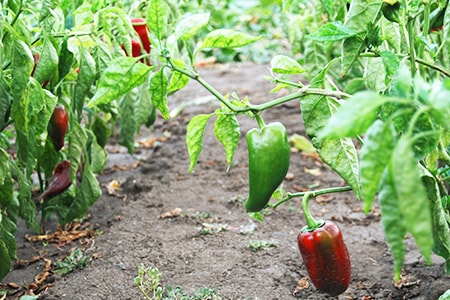
As a quick bit of trivia, bell peppers came to Spain in 1493 in the form of seeds, and were named by Europeans when Christopher Columbus and his crew were making travels. They're native to Mexico, north South America, and Central America, being cultivated for an unknown amount of time in the past.
Let's walk through the process from beginning to end, starting with planting. Then we'll traverse through what you need to do to care for them and help them thrive, and then when and how to harvest.
When to Plant Bell Peppers
Bell peppers take approximately 60 to 90 days to mature. This is a little longer than many other veggies and herbs, so it is best to start indoors since you need to plant them earlier in the season.
You should plant your bell pepper seeds 8 to 10 weeks before you suspect the final spring frost will be. Doing this in containers indoors gives them a warmer and more stable temperature so they can establish themselves before having to fend off disease and pests in the garden.
By transplanting your thriving plants from a container, you can ensure you don't mess up and end up with a cold period where the soil dips below 70 degrees Fahrenheit, which can not only stifle the growth but can even stop the seeds from germinating.
How to Transplant Bell Pepper Plants
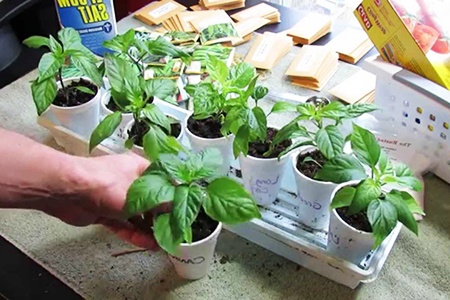
After sowing your seeds indoors and witnessing them become a healthy seedling, you'll want to harden off your bell pepper plant about 10 days before transplanting them outdoors. This is the process of acclimatizing them to being outside, since they've been coddled indoors up until now.
This is basically the process of moving them outside in their containers for a couple hours a day, ramping up to longer periods. At first, keep them out of the wind and direct sun, then slowly introduce that more every day.
Around the same time you start hardening the plants, you should add compost or fertilizer to the garden. If you can till it under, that's even better. But making sure there's plenty of nutrients for the plants will ensure you get a large and tasty harvest.
Once they're ready, dig and sow the plant no deeper than 1/4th of an inch into the garden soil and keep each plant 18 to 24 inches away from one another. They'll need this space as they grow larger.
Transplant your plant outdoors when you see that the nighttime temperature outside is at least 65 degrees Fahrenheit, and the soil temperature isn't any lower than 60 degrees. If the temperature is just a bit too low, you can cover the soil with dark plastic; it will insulate the soil and lock the warmth in.
Don't plant the seedling any deeper than it was in the container's soil or you risk rotting the stem and destroying the entire plant. Going more shallow is better than deeper, if you're unsure.
One more thing to concern yourself with: you should avoid transplanting into the same area you previously grew tomatoes, any types of eggplant, or potatoes. Those plants attract diseases that bell pepper plants are particularly susceptible to.
How to Plant Bell Peppers
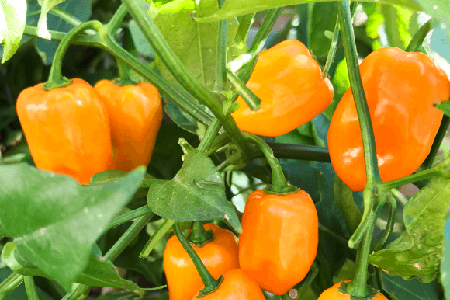
Make sure to plant your bell pepper plants in a location that receives full sun exposure. To make sure other plants don't cast them into shade throughout the day, choose a place that doesn't have other plants with big leaves.
Before you begin planting, you should prepare the soil. First and foremost you need to make sure the soil drains well. You don't want standing water on top or too much moisture under and within the earth or you can cause the roots to rot.
The soil must be rich in organic matter, which is why we till in fertilizer and compost when we start hardening the plants, and the pH of the soil should be between 5.5 and 6.5, more on the acidic side.
Bell Pepper Plant Care
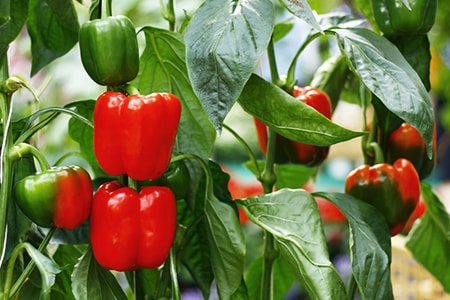
Bell pepper plants require a certain amount of water and also moisture levels. You can retain the soil's humidity using mulch or by covering the soil with a plastic bag, but we recommend mulch just for appearance's sake.
Bell pepper plants require 1 to 2 inches of water weekly, but since these are not a heat-loving plants, make sure to water them daily if you plant them in a hot region. As long as the soil can drain the excess water away, you'll be fine.
Weeds are bad for plants because they compete for the nutrients in the soil. Make sure to pull up any weeds you find growing around and in between your plants. Do so carefully as you can cause damage to the bell pepper roots.
Once you see the first bell peppers beginning to grow, fertilize the soil again with fertilizer or compost and really begin paying attention to your watering routine. Their water demands are about to increase big time.
These plants have big leaves (not to mention the heavy peppers), which may cause the plant to bend at the stem. It's best to make sure they are well-supported with stake and cages.
They aren't necessarily climbing vegetables because they can stand up on their own, but it's best to offer extra support, mainly to keep the bell peppers themselves off the ground.
How to Harvest Bell Peppers
To harvest your bell peppers from the plant, all you have to do is wait for the fruit to get to your ideal size and color. You can then collect them right away. The longer you leave your bell pepper on the plant, the sweeter it will get.
As bell pepper matures, they change color from yellow to red, and their sweetness level and vitamin C content increase. Of course, you may be growing the green variety, in which case your biggest tell is the size and firmness of the pepper.
If you don't want to divert too much energy away from the plant trying to heal the spot where you removed a bell pepper, cut it off with a knife or scissors so it's as clean and as simple of a wound as possible. You don't have to harvest them all at once, of course.
When to Pick Bell Peppers
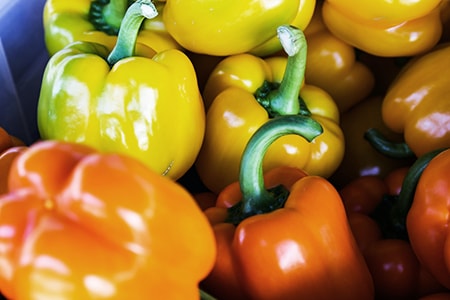
Approximately 2 to 3 months after planting, the bell pepper fruits begin growing. You'll know this is about to occur when white flowers appear on the plant. Once the fruit reaches a size about 4 to 5 inches in length, they're ready to be harvested.
If you pick them early in the season when the fruits are about 2 inches long, you can get a second harvest later with a much larger set of fruits. This is recommended as it encourages far bigger and sweeter peppers.
How Many Bell Peppers Per Plant?
You can expect to harvest somewhere between 5 and 10 large bell peppers per plant, and this does not include the smaller ones you'll pick earlier in the season. Those encourage the growth of the larger peppers later.
The amount of fruits you'll receive from each plant depend upon the health of the plant, largely determined by freedom from heat or cold stress, quality and consistency of watering, pest or disease damage, etc.
How Long Does a Bell Pepper Take to Grow?
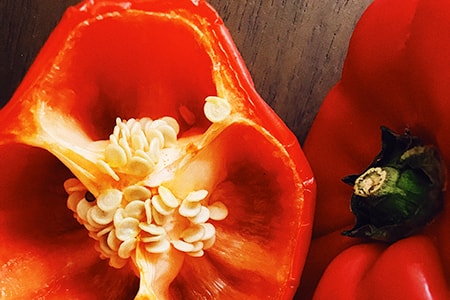
From seed to maturity, bell peppers take between 60 and 90 days to grow. At this point you'll begin seeing white flowers emerge on the plant, signaling that the fruits are about to grow. They become enlarged quickly, and when they reach 4 to 5 inches in length that is the perfect time to harvest them.
How to Store Bell Peppers
Bell pepper tastes excellent when they are fresh, but if you want to store your big harvest, you can refrigerate them for up to 10 days. If you can't use them all in time, you can freeze them for more extended storage after cutting them in pieces and de-seeding them.
Another excellent way of storing bell pepper is by drying them; you can cut them into strips and remove the seeds, then spread them on a tray. Bake the pieces in the oven at 140 degrees Fahrenheit until they become brittle.
After that, you can store them in a container or plastic baggies. You may think it'd be weird to eat them in this dehydrated, but this really concentrates their taste and gives some texture to your salads, hamburgers, etc.
Diseases Commonly Found in Bell Pepper
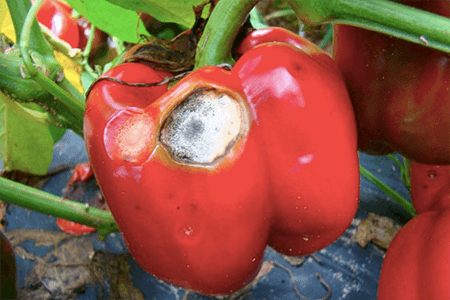
There are several diseases found in bell pepper. Here are a couple of the most common, not counting common posts like aphids, potato beetles, tomato hornworms, and root-knot nematodes.
Anthracnose - this fungal infection causes spots to form on the bell pepper stem, leaves, and fruit. These spots will be black, purple, yellow, or brown in color. The spot is darkened and sinks; after a while, they turn into a pink gelatinous mass, and finally, the plant rots. You can control this by using mulch and planting in well-drained soil.
Blossom-end rot – this problem is caused by nutritional deficiencies. It causes dark and black spots on the blossom-end portion of the fruit. It can be controlled by removing the already affected fruits. For prevention, make sure the plants get proper nutrition by fertilizing the soil a week before planting and then again when the fruits begin to grow.
Another issue is related to having too much nitrogen in your fertilizer. This can cause the foliage to grow quicker, but the fruit growth is going to be discouraged. If this happens to you, the next time, use a 0-20-20 fertilizer that has zero nitrogen.
Types of Bell Pepper
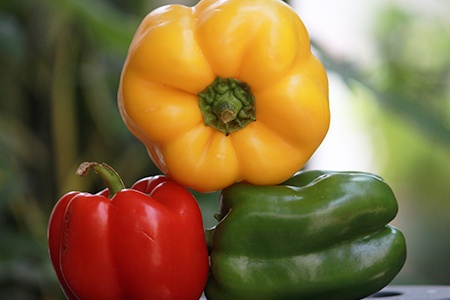
There are different varieties of bell pepper out there. They're of different tastes, colors, and sizes. However, you should choose the ones that are not susceptible to rotting.
We suggest the following varieties as they mature faster; eating bell peppers that have reached their full-color stage is beneficial for taste and texture.
- Green to Red: Gypsy, Lipstick, Bell Boy, Lady Bell
- Orange: Orange Sun & Milena
- Yellow: Golden California Wonder
These will result in you having fruits of the brightest and richest colors, sweetness, and nutrient contents.
That's How to Grow Bell Peppers!
If the weather co-operates with you, and you make sure to stick with our guide, you're sure to grow your very own bell pepper plant successfully. It may seem challenging at first, but it's not as you can tell by reading the instructions above.
Knowing how to grow bell peppers is the entire battle. The rest is simply in the timing of planting and then consistent watering. It's so easy even I managed to pull it off!



